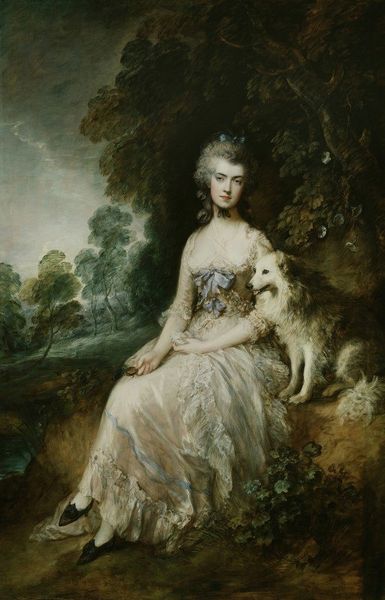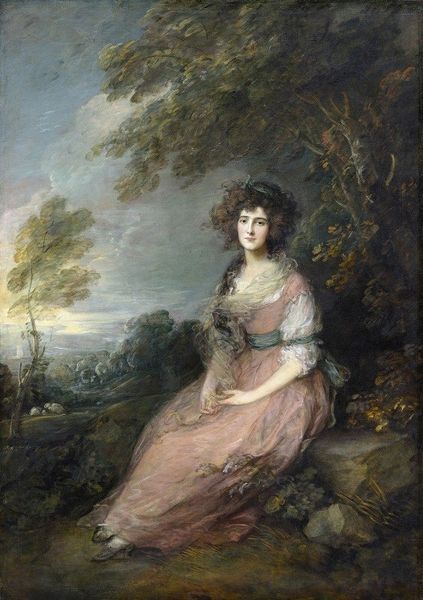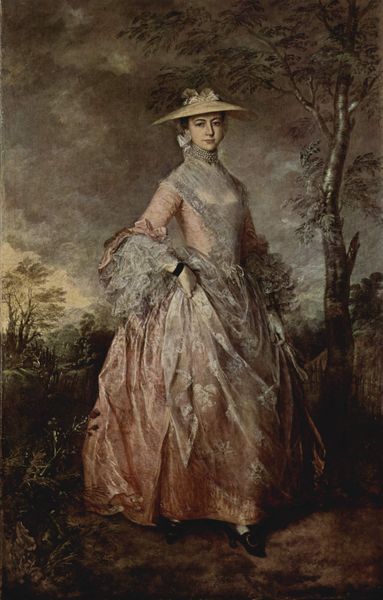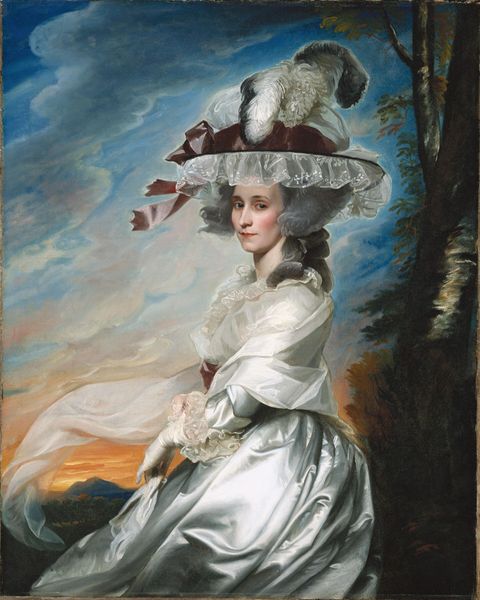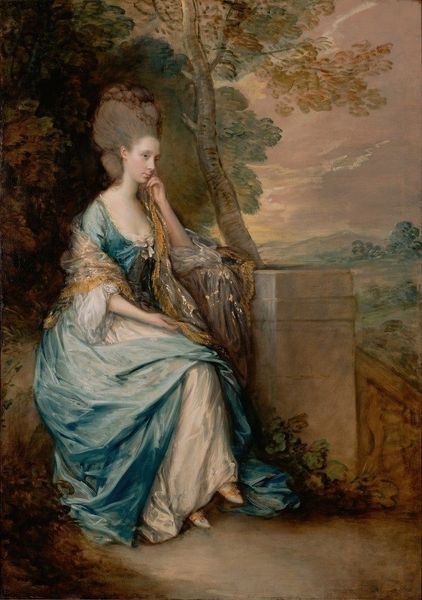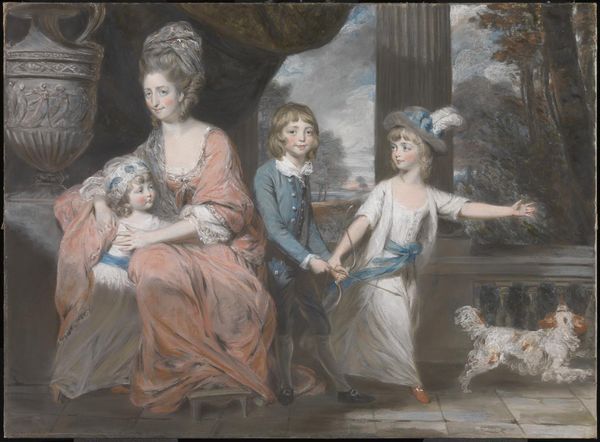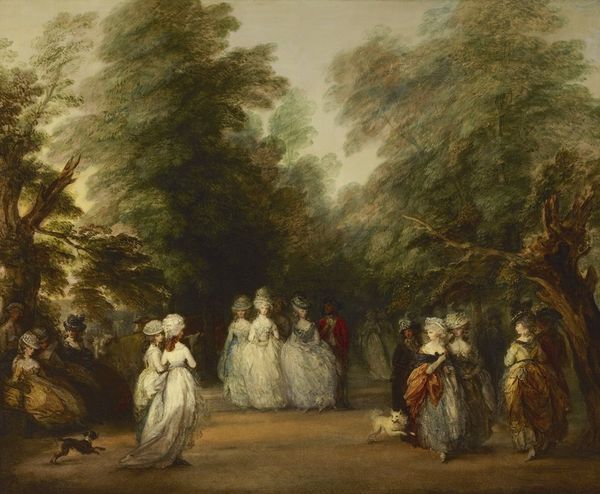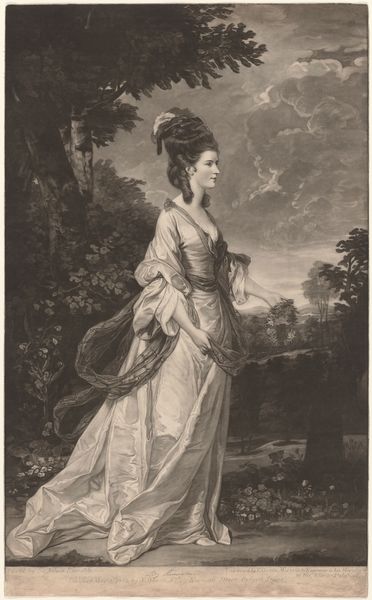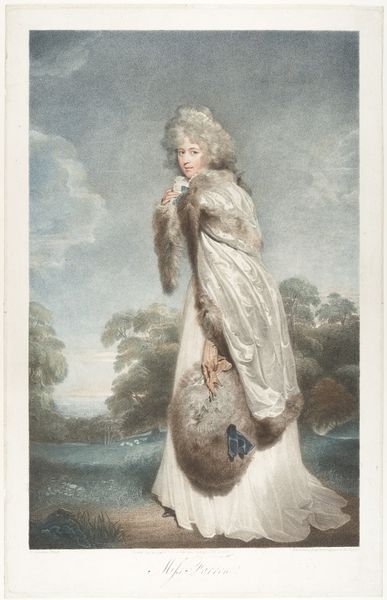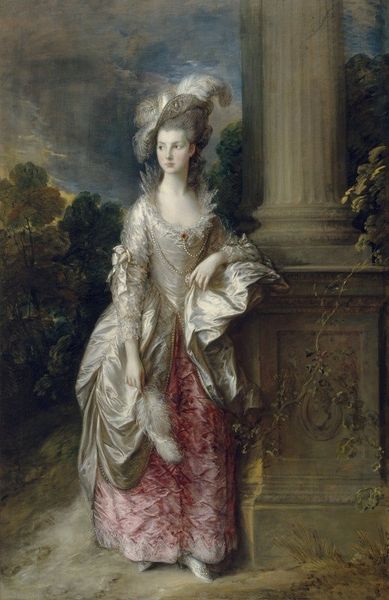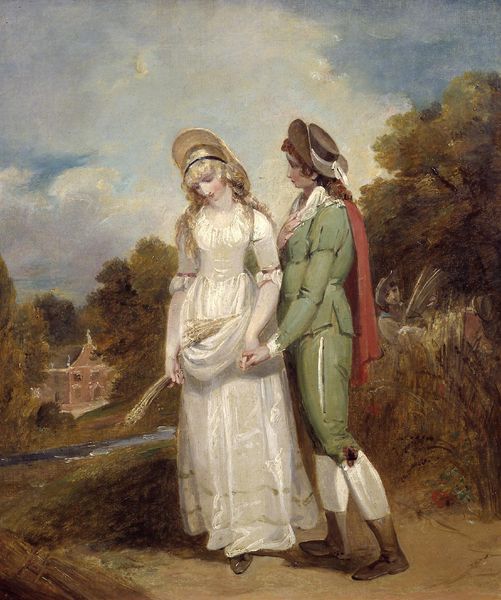
Copyright: Public Domain: Artvee
Thomas Gainsborough painted this pastoral scene of Henry, Duke of Cumberland, amidst a vibrant natural setting. At first glance, it may seem to simply depict a leisurely stroll through a garden, but the presence of the dog introduces a deeper layer. Dogs have long symbolized loyalty and fidelity, recurring motifs in art across centuries and cultures, from ancient Roman mosaics to Renaissance portraits. But here, the inclusion of the dog feels almost perfunctory, lacking the genuine affection one might expect. This dissonance suggests a societal commentary, perhaps on the performative aspects of nobility. Consider the “Arnolfini Portrait” by Jan van Eyck, where the dog at the couple's feet is thought to indicate marital fidelity, or the various depictions of dogs accompanying emperors and kings as symbols of their power and loyalty. Yet, in Gainsborough’s painting, the dog's presence does not instill the same sense of trust or deep connection. It is an echo of a symbol, subtly altered, hinting at a deeper unease or superficiality within the Duke’s world.
Comments
No comments
Be the first to comment and join the conversation on the ultimate creative platform.
